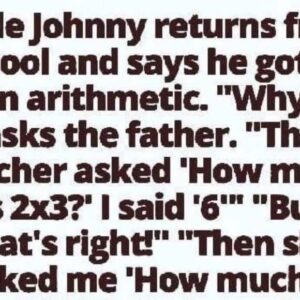In a recent classroom activity designed to foster creativity and vocabulary skills, a teacher at a local school implemented an innovative word game that would soon become the talk of the day. Tasked with encouraging her students to think inventively, she asked them to come up with words ending in “-tor” that evoked the image of a creature with an insatiable appetite. The exercise, meant to spark both linguistic ingenuity and a bit of humor, quickly proved to be a memorable experience for everyone involved.
At the start of the game, the teacher explained the challenge: think of words that end in “-tor” and suggest an unquenchable hunger for goods or a voracious appetite. The classroom, filled with bright, enthusiastic students, buzzed with anticipation. Hands shot up in the air as students eagerly awaited their turn to contribute.
A confident young student led the way, boldly shouting out the word “Alligator!” The teacher smiled and commended him for his imaginative choice, acknowledging that his answer fit well with the playful theme of the activity. The class responded with a round of applause, setting a positive tone for the rest of the session.
Soon after, another student enthusiastically shouted, “Predator!” The word, charged with energy and perfectly aligned with the concept of a creature that consumes everything in its path, sparked even more excitement among the students. The air was filled with anticipation as the teacher looked forward to hearing more creative responses from the class.

As the game progressed, one student in particular, affectionately known as Little Johnny for his quick wit and mischievous demeanor, captured everyone’s attention. When it was his turn, Johnny’s voice rang out in a tone that was both innocent and playfully irreverent: “Miss, v***ator.” The unexpected word elicited an immediate burst of laughter from the class. Johnny’s clever answer was unexpected and offbeat, catching both his peers and the teacher off guard.
Struggling to maintain her composure amidst the contagious giggles, the teacher paused and remarked, “That’s definitely a big word, Johnny, but it doesn’t actually consume anything.” Unfazed by the teacher’s gentle correction, Johnny quickly offered an explanation with a cheeky smile: “Well, my sister has one, and she says it eats batteries like there’s no tomorrow!” His response, delivered with a mix of sincerity and playful exaggeration, only added to the amusement and charm of the moment.
The classroom erupted into further laughter as the students appreciated Johnny’s clever twist. In that moment, it was clear that the word game had achieved its purpose—not only had it stimulated creative thinking, but it had also brought genuine joy and light-hearted humor into the learning environment. The teacher, recognizing the spontaneous brilliance of the exercise, acknowledged that while fostering creativity sometimes led to unexpected outcomes, these moments were exactly what made learning so enriching and memorable.
This episode serves as a striking example of how educational activities can simultaneously challenge students and create a supportive atmosphere where humor and creativity flourish. The teacher’s decision to use an unconventional word game was a deliberate effort to encourage the students to explore language in a fun and engaging way. By inviting them to form words with a specific ending and conceptual twist, she effectively turned a simple classroom exercise into an opportunity for imaginative expression and critical thinking.
Furthermore, the incident highlights the delicate balance teachers must maintain between guiding students’ learning and allowing the freedom for unfiltered, spontaneous creativity. In every classroom, moments of exuberance and unexpected humor are common, and they often become the most cherished memories of the school experience. In this case, Johnny’s audacious remark not only showcased his linguistic inventiveness but also provided a moment of levity that underscored the inherent joy of learning.
Beyond the immediate amusement, the event sparked reflections among both the teacher and her students about the role of creativity in education. It is a reminder that the classroom is a dynamic space where intellectual rigor meets the unpredictable energy of youth. The humorous exchange, while seemingly trivial, exemplifies how learning is most effective when it is infused with moments of genuine engagement and spontaneity. As students navigate the complexities of language and expression, exercises like this serve as a powerful tool to break the monotony of traditional instruction and inspire them to think outside the box.
Moreover, this memorable word game is indicative of the broader educational philosophy that values process over product. While it is important for students to arrive at correct answers, the journey of exploration—the brainstorming, the creative risk-taking, and the laughter that follows unexpected answers—often holds greater significance in their overall learning experience. The teacher’s willingness to celebrate both the clever and the humorous aspects of her students’ responses reinforces a culture of learning that prioritizes curiosity and critical thought over mere correctness.
In conclusion, the delightful chaos that ensued from the simple challenge of naming words ending in “-tor” demonstrates that when creativity is given free rein, it can lead to moments of unexpected brilliance. Little Johnny’s audacious answer and the ensuing laughter in the classroom are a testament to the fact that educational experiences, when approached with a sense of humor and open-mindedness, can leave a lasting impact. This story is a vivid reminder that the classroom is not just a place for academic instruction but also a stage for the unfolding of unforgettable moments that nurture both the mind and the spirit.
Whether it is through a well-chosen word or a clever twist on language, moments like these encourage us all to appreciate the beauty of learning in its most natural and joyful form.





